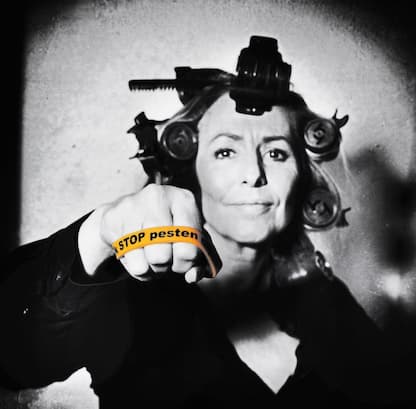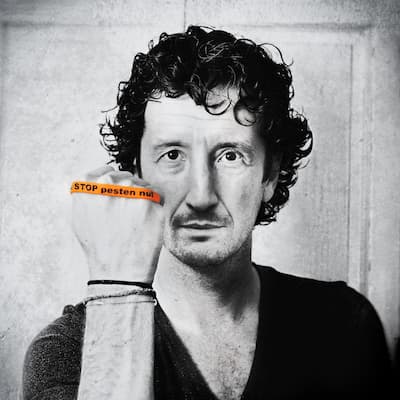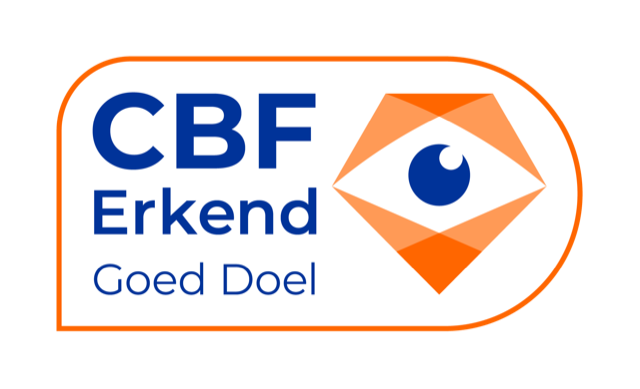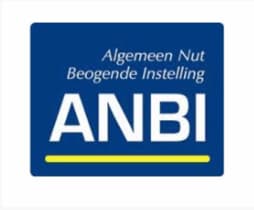We examined the association between involvement in peer victimization in early childhood and different measures of peer relations to examine the role of the peer group in victimization with a special focus on the role of the aggressor, defender, and target. Children (N = 200; 45.5% girls) and teachers (N = 8; 100% women) were recruited from three primary schools in the south-east of England. Children were aged 5−7 years (M = 75.6 months, SD = 10.39).
Child and teacher reports of children's friendships were obtained. Children reported on the quality of their best friendship. Children provided peer reports on involvement in peer victimization (as aggressor, defender, and target) and social status (like-most and like-least). Results show that aggressive children received more like-least nominations than other children, defenders were the most liked by peers, but targets' social status was not clearly identifiable. There were no significant differences between role in peer victimization and best friend nominations—most children said that they had a best friend. Similarly, there were no differences in reciprocated friendship between different roles.
However, children who had their friendship reciprocated received more defender nominations. In line with the homophily hypothesis, aggressive children tended to have aggressive friends and have friendships characterized by conflict. Defenders were friends with other defenders. Targets tended to follow the social competence model of friendships by indicating defenders as their best friends. We discuss these findings in relation to the role that group processes may play in peer victimization in early childhood.
In the current study, we aimed to build on the existing literature with older children and to contribute to our understanding of peer victimization during early childhood. The findings indicate that peer relations and friendships are associated with differences in young children's involvement in peer victimization and suggest that peer processes may play a role in peer victimization even during early childhood.
As predicted in Hypothesis 1 and in line with previous research, there were differences among children in their broader peer status related to their behavior in peer victimization. Children who were identified by their peers as being aggressive received more like-least nominations than other children and there was a strong positive correlation between aggression and like-least. This confirms the findings of Camodeca et al. (2015) who reported that children who are aggressive in the early years of school are often disliked by the wider peer group. However, aggressive children only differed from defenders and not targets or children taking no role in terms of like-most nominations and peer-reported best friend nominations, indicating that they may be liked and considered as a friend by some other children in the peer group. These findings were only found for peer-reported status and not for teacher-reported status. This difference in findings may be reflective that teachers have less awareness of the fast-paced changes in children's peer relations.
In the current study, defenders received more like-most nominations than many other children, more best friend nominations than No Role children and fewer like-least nominations than aggressors or targets. There were significant positive associations between defender nominations and like-most and number of best friend nominations, and a negative relation between like-least and defender nominations. This indicates that defenders appear to be well-liked by the broader peer group confirming previous findings (Camodeca et al., 2015). The direction of the association between defending and peer status at this age is unclear. It is possible that defending others may lead to higher peer status. In line with the social competence theory of friendships, defenders may be viewed as being more desirable as friends or defending others is associated with other characteristics such as dominance which are associated with peer status. Additionally, being in a position to be able to defend others without fear of retaliation may be linked to having a higher status.
Children who were identified by their peers as being the targets of peer victimization received more like-most and like-least nominations than children who were not identified as taking a role in peer victimization. Furthermore, nominations for victimization were significantly and positively associated with like-most, like-least and the number of nominations received for best friend, but the magnitude of the correlation was small. This mixed pattern of weak correlations for targets suggests that there may not be a clearly identifiable association between peer status and victimization at this age, as indicated by previous research (Huitsing & Monks, 2018). This also reflects the conflicting findings in the existing literature with some suggesting a negative association between social preference and victimization (e.g., Lee, 2020; Nelson et al., 2010), but other studies finding no relationship (Camodeca et al., 2015; Monks et al., 2003). This may reflect the suggestion that peer victimization at this age differs from bullying in older groups. There is some evidence to suggest that aggressive children behave aggressively to various peers rather than particularly targeting others who may be vulnerable (Huitsing & Monks, 2018; Monks et al., 2003).
Most children said that they had a best friend and this did not vary by role, although teacher reports indicated that children who were identified as having No Role were less likely to have a best friend than other children. A key aspect of friendship is reciprocity (Bagwell & Schmidt, 2011), which refers to the child identifying someone as their best friend who also identifies them as their best friend. Considerably fewer best friendships were reciprocated in the current study; around a quarter of child reported best friendships and fewer than half of teacher-reported best friendships. Of note is the finding that there were no significant differences across the roles in the proportion of children who had a reciprocated best friendship. This finding supports those of Kamper-DeMarco and Ostrov (2019) who found that young children with reciprocated friendships did not differ from those with unidirectional (not reciprocated) friendships in levels of aggression. In Hypothesis 2 it was predicted that defenders would have more reciprocated friendships than other children. We did not find differences between defenders and other children as measured by the dominant role the child took in peer victimization. However, children who had their friendship reciprocated received more defender nominations than those who did not have a reciprocated friendship according to both child- and teacher-reported friendships. This is in line with research in this area where prosocial characteristics salient for defenders were a key predictor of initiating and maintaining friendships in a sample of older children (Bowker et al., 2010; Newcomb & Bagwell, 1995). The little research with targets of aggression at this age has suggested that they are less likely to have a reciprocated best friend (Ladd et al., 1997) but this was not the case in the current study.
In accord with predictions (Hypothesis 3) there were similarities between children and their best friend in terms of aggression (child-reported best friend) and defending (teacher- and child-reported best friends). Because these correlations are relatively weak, we remain cautious about the implications. The weak size of the association may stem from the small sample size in the subgroups of children (Bates et al., 1996) or may be a reflection of the nature of friendships at this age that is characterized mainly by simply playing together (Niffenegger & Willer, 1998). These findings extend our current understanding of peer victimization in early childhood by noting the similarities between children and their best friends in terms of aggressive and prosocial behavior. The finding of similarity in aggression is concerning. Although studies with children during early childhood have noted that peer victimization appears to be less of a group process during early childhood and that the roles of reinforcer and assistant to the perpetrator are not clearly identifiable at this age (Camodeca et al., 2015), it appears that aggressive children are forming relationships with other aggressive children. It is possible that although aggressive children may not be victimizing others as part of a group at this age, they may be supporting and reinforcing each other's behavior in other ways. For example, Huitsing and Monks (2018) found that young aggressive children defend each other. Thus, it is possible that this homophily may have negative outcomes leading to an increase in these types of behavior (Dishion et al., 1994; 1995). It is also possible that what we are seeing here are the early origins of the group processes that we see in bullying during middle childhood and adolescence.
Furthermore, in line with Hypothesis 4, there was some evidence that children who are higher in aggression report higher levels of conflict in their relationship with their best friend. The questions asking about conflict focussed on the aggression by the best friend toward the child. The size of the correlation was very small possibly due to the small sample size in the two clusters (9 and 7 for reciprocated friendships for aggressor and victim respectively) and generally low in the subgroups of children categorized into different roles (see Table 4). This means that caution should be taken in interpreting the results to not overstate their importance. We are drawing our conclusions from this finding; however, we acknowledge that further studies using larger sample would provide more reliable results. This finding suggests that aggressive children who are friends with other aggressive children may also be experiencing aggression within these friendships. Although conflict is a commonly occurring factor within friendships, it is worth noting that this was particularly relevant for aggressive children in their relationships with other aggressive children. It is important that children are aware of what makes a good friendship and that, although conflict may occur, it should not be the defining characteristic of their friendship. Interestingly, aggressive children did not report lower levels of companionship and recreation or validation and caring within their friendships than other children. Thus, children are viewing these relationships positively, even though they are more likely to include aggression directed toward them. Similarly, there were no higher levels of relational aggression within these friendships. Johnson and Foster's (2005) research indicates that relational aggression predicts a decrease in liking and mutual friendship over time; hence in our sample, scoring higher on this factor would likely make such friendship impossible. It is possible that these relationships may later develop into the participant roles that are reported in middle childhood. Research with older students suggests that some children who take these “supporting” roles are aggressive (Crapanzano et al., 2011) and form friendships with other aggressive children who take complementary roles (ringleader, reinforcer, and assistant) (Salmivalli et al., 1997), with the suggestion that children choose friends who have similar probullying roles as themselves and that they become more similar over time (Bowker et al., 2006; Cairns et al., 1988; Haselager et al., 1998; Rubin et al., 1998).
The finding that children were similar to their friends in terms of defending was confirmed by both teacher and child reports. This suggests that children are similar in terms of this aspect of prosocial behavior which provides support for the homophily theory. This ties in with the findings from previous research that there is reciprocity and transitivity in defending networks (Huitsing & Monks, 2018). It is therefore possible that children are defended by their close group of friends.
Furthermore, as was tentatively predicted, it was found that children's victimization nominations were positively correlated with the defender nominations of the individual they identified as their best friend, supporting the social competence model of friendship (Asher, 1985). However, child defender nominations were not significantly associated with best friend victimization nominations. Thus, it is possible that these associations are one-way with children who are experiencing victimization more likely to identify prosocial peers as their “best friend” even if this is not reciprocated at this age. This may be as a result of the individuals' defending behavior which may make them desirable friends for those who are being victimized, reflecting the research that has indicated that children of this age want to be friends with others who show prosocial characteristics (Gest et al., 2001; Newcomb & Bagwell, 1995; Shin et al., 2019)
As indicated above, although we asked children to identify their best friend and most children were able to do so, many of these friendships were unidirectional rather than reciprocated. Given the smaller number of reciprocated friendships we were unable to examine whether reciprocated friendships were more frequent than unidirectional friendships between children who displayed similar, or complementary behavior. It is possible that the effects of friendships are more likely when the friendship is reciprocated than when it is unidirectional. This would be an area for future research. Furthermore, the cross-sectional nature of the current study means that it was difficult to define the direction of these relations. It is likely that longitudinal work in this area would facilitate our understanding of the impacts of stable and more transient friendships and how these may develop in tandem with the group dynamics of peer victimization.
The key limitations of the current research are threefold. The first stems from the cross-sectional nature of the study that renders singular measurement of children's friendships and peer victimization roles, which allows for only correlational assessment of the relations between the two variables. Conducting longitudinal research would help us to define the direction of this relation and observe how it changes and develops over time as children enter middle childhood. It is also likely that longitudinal work in this area would facilitate our understanding of the impacts of stable and more transient friendships and how these may develop in tandem with the group dynamics of peer victimization.
The second limitation relates to the small sample size and classification into peer victimization roles. Increasing the sample size would enable us to test more robustly for differences existing between peer victimization roles. We could also group children into more than one peer victimization role and test for their joint presence, for example as an aggressor and target. From the sample, 25 children were cross-categorized into multiple roles, but the sample size was still too small to create meaningful subgroups for statistical analysis and we were not able to examine how multiple peer victimization roles are associated within friendships.
The third limitation stems from the questionnaire measuring the quality of children's friendships. Cronbach's α suggests that some of the items measuring the four subscales may be redundant when used with this sample. Hence, some of the three questions for each scale could have been omitted as other questions sufficiently capture each measured dimension of friendship.
The findings of this study suggest that although previous studies have indicated that young children do not consistently take the participant roles of assistant and reinforcer (Monks & O'Toole, 2021) there may still be some group dynamics in play during early childhood which may indicate the early developments of these group processes. Although children who are aggressive are generally disliked by their peer group as a whole, they do identify friends who are also aggressive. It is possible that these friendships act as a staging ground for peer victimization as well because aggressive children report higher levels of conflict within these relationships. Intervention and prevention programs should aim to address these issues early on in children's schooling. Although this study again highlights that peer victimization does occur during the early years at school, these findings suggest that working with children on developing positive friendships may be a way of encouraging lower levels of aggression within the peer group.
In sum, friendships at a young age may be important for developing and strengthening the roles taken in peer victimization in later childhood. On one hand, in friendship dyads where higher overt aggression is present we may identify a cycle of aggression that stems from the behavior and role presented by best friends who are both aggressive. This scenario is worrying as it points to increased aggression within an important relationship with a close friend that has shown to be detrimental to child general development (Hartup, 1996) and social adjustment (Maunder & Monks, 2019). On the other hand, among children who share prosocial characteristics, friendships may contribute to the development of defending behavior. Antibullying work among older children and adolescents has included the promotion of attitudes and behaviors that are supportive of victims and have demonstrated effectiveness in combatting bullying (Salmivalli et al., 2011).
In conclusion, the current study suggests that a potentially harmful cycle of mutually supportive antisocial behavior within friendship dyads of aggressive children may begin during early childhood and at the same time points to the beneficial role friendships play in the functioning of children with prosocial characteristics. Children who are victimized by peers at a young age may find much-needed support within friendships with defenders whose interventions help to break the disruptive cycle that aggressors and targets find themselves in.
Vertaling Google translate
We onderzochten het verband tussen betrokkenheid bij slachtofferschap van leeftijdsgenoten in de vroege kinderjaren en verschillende maten van relaties met leeftijdsgenoten om de rol van de leeftijdsgenoten bij slachtofferschap te onderzoeken, met speciale aandacht voor de rol van de agressor, verdediger en doelwit. Van drie basisscholen in het zuidoosten van Engeland werden kinderen (N= 200; 45,5% meisjes) en leerkrachten (N= 8; 100% vrouwen) geworven. Kinderen in de leeftijd van 5-7 jaar (M= 75,6 maanden, SD = 10,39). Er werden rapporten van kinderen en leerkrachten verkregen over vriendschappen van kinderen.
Kinderen rapporteerden over de kwaliteit van hun beste vriendschap. Kinderen leverden peerrapporten over betrokkenheid bij slachtofferschap door leeftijdsgenoten (als agressor, verdediger en doelwit) en sociale status (zoals meest en minst). De resultaten laten zien dat agressieve kinderen meer de minste nominaties kregen dan andere kinderen, dat verdedigers het meest geliefd waren bij leeftijdsgenoten, maar dat de sociale status van doelwitten niet duidelijk identificeerbaar was. Er waren geen significante verschillen tussen rol in peervictimization en beste vriend-nominaties - de meeste kinderen zeiden dat ze een beste vriend hadden. Evenzo waren er geen verschillen in wederzijdse vriendschap tussen verschillende rollen.
Kinderen die hun vriendschap beantwoordden, ontvingen echter meer nominaties voor verdedigers. In overeenstemming met de homofiele hypothese hadden agressieve kinderen de neiging om agressieve vrienden te hebben en vriendschappen te hebben die werden gekenmerkt door conflicten. Verdedigers waren bevriend met andere verdedigers. Doelgroepen hadden de neiging om het sociale-competentiemodel van vriendschappen te volgen door verdedigers aan te duiden als hun beste vrienden. We bespreken deze bevindingen in relatie tot de rol die groepsprocessen kunnen spelen bij slachtofferschap door leeftijdsgenoten in de vroege kinderjaren. SLEUTELWOORDEN
Agressie, vroege kinderjaren, vriendschappen, relaties met leeftijdsgenoten, slachtofferschap van leeftijdsgenotenAgressief gedrag . 2022;1–12.wileyonlinelibrary.com/journal/ab|1Dit is een open access-artikel onder de voorwaarden van de Creative Commons Attribution-NonCommercial-NoDerivs-licentie, die gebruik en distributie in elk medium toestaat, op voorwaarde dat het originele werk correct wordt geciteerd, het gebruik is niet-commercieel en er zijn geen wijzigingen of aanpassingen aangebracht.© 2022 De auteurs.Agressief gedrag, gepubliceerd door Wiley Periodicals LLC Kat Kucaba en Claire P. Monks hebben in gelijke mate bijgedragen aan het schrijven van dit artikel en aan de gegevensanalyse.
In de huidige studie wilden we voortbouwen op de bestaande literatuur met oudere kinderen en bijdragen aan ons begrip van slachtofferschap van leeftijdsgenoten tijdens de vroege kinderjaren. De bevindingen geven aan dat relaties en vriendschappen met leeftijdsgenoten verband houden met verschillen in de betrokkenheid van jonge kinderen bij slachtofferschap van leeftijdsgenoten en suggereren dat processen van leeftijdsgenoten zelfs tijdens de vroege kinderjaren een rol kunnen spelen bij het slachtoffer worden van leeftijdsgenoten.
Zoals voorspeld in hypothese 1 en in lijn met eerder onderzoek, waren er verschillen tussen kinderen in hun bredere status van leeftijdsgenoten gerelateerd aan hun gedrag bij slachtofferschap van leeftijdsgenoten. Kinderen die door hun leeftijdsgenoten als agressief werden geïdentificeerd, kregen meer like-minst-nominaties dan andere kinderen en er was een sterke positieve correlatie tussen agressie en like-minst. Dit bevestigt de bevindingen van Camodeca et al. (2015) die meldden dat kinderen die agressief zijn in de eerste jaren van school vaak een hekel hebben aan de bredere groep van leeftijdsgenoten. Agressieve kinderen verschilden echter alleen van verdedigers en niet van doelwitten of kinderen die geen rol speelden in termen van de meeste nominaties en door leeftijdgenoten gerapporteerde nominaties voor beste vrienden, wat aangeeft dat ze door sommige andere kinderen in de leeftijdsgroep aardig gevonden en beschouwd kunnen worden als een vriend . Deze bevindingen werden alleen gevonden voor peer-gerapporteerde status en niet voor leraar-gerapporteerde status. Dit verschil in bevindingen kan een weerspiegeling zijn van het feit dat leraren zich minder bewust zijn van de snelle veranderingen in de relaties met leeftijdsgenoten van kinderen.
In het huidige onderzoek ontvingen verdedigers meer nominaties met de meeste likes dan veel andere kinderen, meer nominaties voor beste vrienden dan kinderen zonder rol en minder nominaties met de minste likes dan agressors of doelwitten. Er waren significante positieve associaties tussen nominaties van verdedigers en nominaties voor de meeste en het aantal beste vrienden, en een negatief verband tussen nominaties voor de minst-leuke en verdedigers. Dit geeft aan dat verdedigers geliefd lijken te zijn bij de bredere groep van gelijken, wat eerdere bevindingen bevestigt (Camodeca et al., 2015). De richting van het verband tussen verdedigen en status van leeftijdsgenoten op deze leeftijd is onduidelijk. Het is mogelijk dat het verdedigen van anderen kan leiden tot een hogere peer-status. In overeenstemming met de sociale-competentietheorie van vriendschappen, kunnen verdedigers als meer wenselijk worden beschouwd als vrienden, of het verdedigen van anderen wordt geassocieerd met andere kenmerken, zoals dominantie, die worden geassocieerd met de status van gelijken. Bovendien kan de positie om anderen te verdedigen zonder angst voor represailles, verband houden met het hebben van een hogere status.
Kinderen die door hun leeftijdsgenoten werden geïdentificeerd als het doelwit van slachtofferschap van leeftijdsgenoten, kregen meer nominaties voor het meest en het minst voor de hand dan kinderen die niet werden geïdentificeerd als een rol in het slachtofferschap van leeftijdsgenoten. Verder waren nominaties voor slachtofferschap significant en positief geassocieerd met like-most, like-minst en het aantal nominaties voor beste vriend, maar de omvang van de correlatie was klein. Dit gemengde patroon van zwakke correlaties voor doelwitten suggereert dat er op deze leeftijd mogelijk geen duidelijk identificeerbare associatie is tussen de status van leeftijdsgenoten en slachtofferschap, zoals blijkt uit eerder onderzoek (Huitsing & Monks, 2018). Dit weerspiegelt ook de tegenstrijdige bevindingen in de bestaande literatuur, waarbij sommige een negatief verband suggereren tussen sociale voorkeur en slachtofferschap (bijv. Lee, 2020; Nelson et al., 2010), maar andere onderzoeken vinden geen verband (Camodeca et al., 2015; Monks et al., 2003). Dit kan een weerspiegeling zijn van de suggestie dat slachtofferschap van leeftijdsgenoten op deze leeftijd verschilt van pesten in oudere groepen. Er zijn aanwijzingen dat agressieve kinderen zich agressief gedragen tegenover verschillende leeftijdsgenoten in plaats van zich speciaal op anderen te richten die mogelijk kwetsbaar zijn (Huitsing & Monks, 2018; Monks et al., 2003).
De meeste kinderen zeiden dat ze een beste vriend hadden en dit verschilde niet per rol, hoewel uit rapporten van leraren bleek dat kinderen van wie werd vastgesteld dat ze geen rol hadden, minder vaak een beste vriend hadden dan andere kinderen. Een belangrijk aspect van vriendschap is wederkerigheid (Bagwell & Schmidt, 2011), wat verwijst naar het kind dat iemand identificeert als hun beste vriend, die hen ook als hun beste vriend identificeert. In het huidige onderzoek werden aanzienlijk minder beste vriendschappen beantwoord; ongeveer een kwart van de kinderen rapporteerde de beste vriendschappen en minder dan de helft van de leraren rapporteerde de beste vriendschappen. Opmerkelijk is de bevinding dat er geen significante verschillen waren tussen de rollen in het aandeel kinderen met een wederzijds beste vriendschap. Deze bevinding ondersteunt die van Kamper-DeMarco en Ostrov (2019) die vonden dat jonge kinderen met wederzijdse vriendschappen niet verschilden van die met unidirectionele (niet wederzijdse) vriendschappen in agressieniveaus. In hypothese 2 werd voorspeld dat verdedigers meer wederzijdse vriendschappen zouden hebben dan andere kinderen.
Bovendien werd, zoals voorlopig voorspeld, gevonden dat de nominaties voor slachtofferschap van kinderen positief gecorreleerd waren met de nominaties voor de verdediger van het individu dat ze als hun beste vriend identificeerden, wat het sociale competentiemodel van vriendschap ondersteunt (Asher, 1985). Nominaties van kinderverdedigers waren echter niet significant geassocieerd met nominaties voor beste vriend-slachtofferschap. Het is dus mogelijk dat deze associaties eenrichtingsverkeer zijn met kinderen die slachtofferschap ervaren, meer kans hebben om prosociale leeftijdsgenoten als hun "beste vriend" te identificeren, zelfs als dit op deze leeftijd niet beantwoord wordt. Dit kan het gevolg zijn van het verdedigende gedrag van de individuen, waardoor ze begeerlijke vrienden kunnen worden voor degenen die het slachtoffer zijn geworden, een weerspiegeling van het onderzoek dat heeft aangetoond dat kinderen van deze leeftijd vrienden willen zijn met anderen die prosociale kenmerken vertonen (Gest et al. ., 2001; Newcomb & Bagwell, 1995; Shin et al., 2019)
Zoals hierboven aangegeven, hoewel we kinderen vroegen om hun beste vriend te identificeren en de meeste kinderen konden dit doen, waren veel van deze vriendschappen unidirectioneel in plaats van wederzijds. Gezien het kleinere aantal wederzijdse vriendschappen konden we niet onderzoeken of wederzijdse vriendschappen vaker voorkwamen dan unidirectionele vriendschappen tussen kinderen die vergelijkbaar of complementair gedrag vertoonden. Het is mogelijk dat de effecten van vriendschappen groter zijn wanneer de vriendschap wederzijds is dan wanneer deze eenrichtingsverkeer is. Dit zou een gebied zijn voor toekomstig onderzoek. Bovendien betekent het transversale karakter van de huidige studie dat het moeilijk was om de richting van deze relaties te bepalen. Het is waarschijnlijk dat longitudinaal werk op dit gebied ons begrip zou vergemakkelijken van de effecten van stabiele en meer voorbijgaande vriendschappen en hoe deze zich kunnen ontwikkelen samen met de groepsdynamiek van slachtofferschap van leeftijdsgenoten.
De belangrijkste beperkingen van het huidige onderzoek zijn drievoudig. De eerste komt voort uit het transversale karakter van het onderzoek dat een unieke meting van vriendschappen van kinderen en slachtofferrol van leeftijdsgenoten mogelijk maakt, wat alleen een correlatieve beoordeling van de relaties tussen de twee variabelen mogelijk maakt. Het uitvoeren van longitudinaal onderzoek zou ons helpen om de richting van deze relatie te bepalen en te observeren hoe deze verandert en zich in de loop van de tijd ontwikkelt als kinderen midden in de kindertijd komen. Het is ook waarschijnlijk dat longitudinaal werk op dit gebied ons inzicht zou geven in de effecten van stabiele en meer voorbijgaande vriendschappen en hoe deze zich kunnen ontwikkelen samen met de groepsdynamiek van slachtofferschap van leeftijdsgenoten.
De tweede beperking heeft betrekking op de kleine steekproefomvang en classificatie in rollen van peer slachtofferschap. Het vergroten van de steekproefomvang zou ons in staat stellen om krachtiger te testen op de verschillen die bestaan tussen de rollen van peer-slachtofferschap. We zouden kinderen ook kunnen groeperen in meer dan één rol als slachtoffer van leeftijdsgenoten en testen op hun gezamenlijke aanwezigheid, bijvoorbeeld als agressor en doelwit. Uit de steekproef werden 25 kinderen gecrosscategoriseerd in meerdere rollen, maar de steekproefomvang was nog steeds te klein om zinvolle subgroepen te creëren voor statistische analyse en we waren niet in staat om te onderzoeken hoe meerdere rollen tot slachtofferschap van leeftijdsgenoten samenhangen binnen vriendschappen.
De derde beperking komt voort uit de vragenlijst die de kwaliteit van kindervriendschappen meet. Cronbach's α suggereert dat sommige items die de vier subschalen meten, overbodig kunnen zijn bij gebruik met deze steekproef. Daarom hadden sommige van de drie vragen voor elke schaal weggelaten kunnen worden, aangezien andere vragen elke gemeten dimensie van vriendschap voldoende weergeven.
De bevindingen van dit onderzoek suggereren dat, hoewel eerdere onderzoeken hebben aangetoond dat jonge kinderen niet consequent de rol van assistent en bekrachtiger op zich nemen (Monks & O'Toole, 2021), er toch enige groepsdynamiek in het spel kan zijn tijdens de vroege kinderjaren, wat erop kan wijzen dat de vroege ontwikkelingen van deze groepsprocessen. Hoewel agressieve kinderen over het algemeen een hekel hebben aan hun leeftijdsgenoten als geheel, identificeren ze wel vrienden die ook agressief zijn. Het is mogelijk dat deze vriendschappen ook fungeren als een ontmoetingsplaats voor slachtofferschap door leeftijdsgenoten, omdat agressieve kinderen hogere niveaus van conflict binnen deze relaties rapporteren. Interventie- en preventieprogramma's moeten erop gericht zijn deze problemen vroeg in het onderwijs van kinderen aan te pakken. Hoewel deze studie opnieuw benadrukt dat slachtofferschap van leeftijdsgenoten voorkomt tijdens de eerste jaren op school, suggereren deze bevindingen dat het werken met kinderen aan het ontwikkelen van positieve vriendschappen een manier kan zijn om minder agressie binnen de groep van leeftijdsgenoten aan te moedigen.
Tip van de redactie
Heb je haast? Navigeer dan snel naar:
► Scholen & Professionals Kenniscentrum Pesten in het Onderwijs
- Of navigeer direct naar de informatie per functionaris: Schooldirectie & MT / Anti-pest coördinator / Leerkracht / Mentor / Ouderraad & MR
- Leerlingen & opvoeders: Kinderen & Jongeren (Leerlingen) / Ouders & Opvoeders
► Sportverenigingen Kenniscentrum Pesten in de Sport
- Of navigeer direct naar de informatie per functionaris: Bestuurders / Coaches, Trainers & Begeleiders / (Top)Sporters & Scheidsrechters
- Jonge leden & ouders Kinderen & Jongeren (Leerlingen) / Ouders & Opvoeders
► Werkgevers Kenniscentrum Pesten op het Werk
- Of navigeer direct naar de informatie per functionaris: Directie en bestuurders / HRM / MT en Leidinggevenden / Medewerkers / Ondernemersraden / Vertrouwenspersonen
► Ouderen Kenniscentrum Pesten in Woonzorgcentra

Breng snel een bezoekje aan ...
► Kenniscentrum (Klassiek) Pesten
► Kenniscentrum Online pesten (cyberpesten)
► Kennisbank & Downloadcentrum o.a. Beleid & Factsheets / Handleidingen / Lesmaterialen / Posters / Wetenschappelijke Onderzoeken
► Ik word gepest, wat kan ik doen
Stichting Stop Pesten Nu is het enige Erkende Goede Doel tegen Pesten in Nederland!







